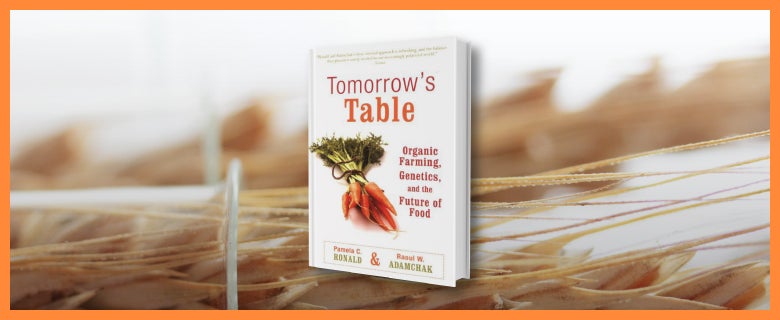While traveling last week to Antarctica, I had a chance to read a book recommended by our foundation’s agricultural development group, Tomorrow's Table: Organic Farming, Genetics, and the Future of Food by Pamela Ronald and Raoul Adamchak.
This is an important book for anyone who wants to learn about the science of seeds and the challenges faced by farmers. It’s only 167 pages, and includes personal stories that give you a sense of the authors as people and how strongly they feel about farming, food and the environment. I think anyone who reads this book will be convinced of the authors’ sincerity and intelligence – even if, like me, you never try any of the cool-sounding recipes.
Whenever I read about farming, I’m reminded how tough it is. Between the weather, weeds, viruses, insects and other pests, farming is a constant struggle, always posing new challenges. A city boy like me can think of it as putting a seed in the ground and waiting for nice stuff to grow. Wrong.
Tomorrow’s Table is a real education on the many choices farmers today must make regarding seeds. It’s very good in explaining genetically engineered seed, how it’s used today (mostly to help plants fight off insects and tolerate herbicide) and how it will be used in the future (to increase disease resistance, drought tolerance, vitamin content and crop yields, for example). The book separates out clearly the issues of how to make sure new seeds are safe, how to price them and how to treat them as intellectual property.
I gained an understanding of the history of organic farming and learned about some of the very clever ways organic farmers control pests. Compared with conventional agriculture, many organic techniques can be more cost effective for poor farmers. I agree with the authors that we will need the best ideas from "organic" thinkers and from scientists – including genetic engineers – to feed the world and help the poorest.
Of course, there are more approaches available to farmers than just organic or biotech. Most of the world’s food is grown with conventional agricultural techniques such as improved seeds, fertilizer and irrigation. The trick is finding the best combination of all of these approaches.
I certainly recommend this book to people who are curious about the future of agriculture and the controversies around it. Many other food books exalt localism and tradition (i.e., lack of new science) as almost religious values. I think some go overboard with their negative views of modern farming, giving very little thought to the productivity increases that poor farmers need - and that the world needs - in order to feed itself, while coping with climate change and evolving threats from plant disease and pests.
I wish Tomorrow’s Table discussed the problem of underinvestment in agricultural research. But the authors’ personal involvement in what they do write about gives the book a note of deep sincerity. That may help get people who are skeptical or confused about new science, including biotechnology, to see that it has an important role to play.





